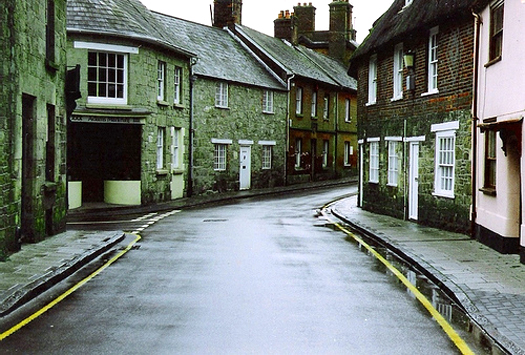A Placemaking Journal
Let’s Get Metaphysical: Considering the value of soul in redevelopment
Not so long ago, in a conversation about technology and green building, there was mention of some high-tech green building models coming out of Europe. Models that, according to reports, perform so well that even if you factor the embedded energy of a previous structure torn down to accommodate them, they still come out ahead.
That’s a potential game changer, at least in terms of selling high-tech green, and I’m not sure it’s one that I welcome.
Let me set the context a bit. In the early days of green technology, it was not uncommon — especially as it relates to marketing — to focus solely on post-construction or post-install performance. Over time, however, such claims have been taken to task. Bamboo flooring, for example, performs a lot differently if you factor in the impacts of shipping it from Asia. It may still prove to be a decent environmental choice, but it’s not necessarily a simple calculation.
This more nuanced reality eventually became the basis of what I’ve found to be the preservation movement’s most compelling point of advocacy to-date: the greenest home is the one already built.
It’s a very effective message because, more often than not, it tends to be true. If you’re measuring environmental metrics, especially the ones particularly relevant to climate change, you tend to start off well behind the 8-ball if your first step is discarding an existing structure.
That’s not to suggest that environmental measures are the only measures that matter or even that they’re the only ones that contribute to sustainability goals. Not surprisingly, the issue is a lot more complicated than that. Nonetheless, it speaks to something people can easily grasp: preservation efforts tend to be green.
Not to get sidetracked
That’s why news of these apparently super-green buildings — ones whose performance is so strong that it can even compensate for removal of an existing structure and still come out ahead — was so off-putting.
My colleague mentioned that he found the renderings to be cold and impersonal, lacking any sense of humanity or craft. That is, their factory-precision was absent any sense of soul.
Soul. Something impossible to measure but equally impossible to deny. So much so that new traditionalists like Hope for Architecture’s Clay Chapman or the Original Green’s Steve Mouzon factor it — and the affection it engenders — heavily in their views looking forward. Says Mouzon:
“The assertion that these hyper-efficient houses out-perform old but lovable buildings that were there before them is fatally flawed, because it’s assumed that the new buildings will be there for a long time. But we have too long a track record of tearing down stuff that can’t be loved as soon as we can afford to.”
For many, it’s the identifiable work of human hands and the pockmarked evidence of human habitation that, at least in part, gives soul to our structures. If you consider such soul metaphysically, you might conclude that it carries some level of inherent energy — energy not currently calculated among the materials and labor embedded within a particular building.
A more precise measure of energy
Just as we’ve come, in time, to better calculate a particular product’s green performance across its entire life cycle, maybe it’s time for the conversation to evolve even further — perhaps even into the realm of the abstract.
Would Euro-sleek, super-green modular buildings still be able to compensate for the demolition of an existing structure if we considered soul among our energy calculations?
What would be the embedded metaphysical value of assessing a piece of land, then drawing out plans rooted in centuries of architectural practice? Or the cosmic energy inherent in hand-cut beams and artful masonry? How about the soul of previous occupancy — babies born within its walls, or relationships tested and restored through the decades? What is the soulful energy measure of sorrow? Or joy?
The unmeasurable contribution of our inherent humanity might not present particular value if you consider green solely in terms of seeking balance with the earth. But what if we further consider it in terms of seeking balance with the universe? If you tear down a storied and graceful historic building — hand-built and rooted in tradition, in which generations of people have crisscrossed into and through each others lives — and replace it with a high-performance, modular gizmo-green equivalent, how much embedded energy is lost if you also count the loss of soul?
I’m inclined to think plenty.
A lose-lose?
If I’m onto something, it may be considerably more difficult than suggested for a new, gizmo-green building — no matter how well performing — to compensate for total energy lost in the demolition of an historic structure. If Mouzon’s right, the environmental performance of that same gizmo building moving forward is further in question because, as something inherently unlovable, it lacks the stuff of longevity.
If we’re both right, it’s no small blow to the idea that mass-produced, tech-based sustainability will constitute our ultimate green achievement. In the grand — perhaps universal — scheme of things, it might even constitute a distraction. What do you think?
–Scott Doyon
If PlaceShakers is our soapbox, our Facebook page is where we step down, grab a drink and enjoy a little conversation. Looking for a heads-up on the latest community-building news and perspective from around the web? Click through and “Like” us and we’ll keep you in the loop.










